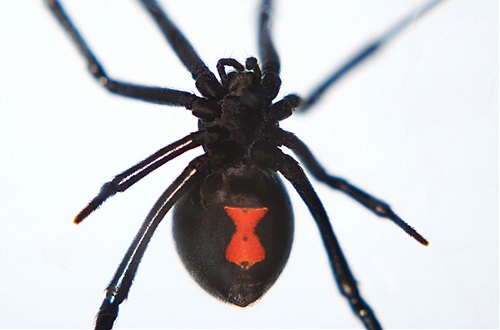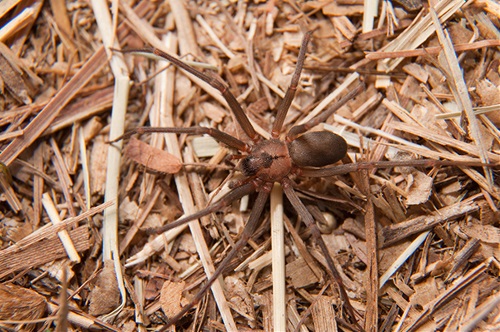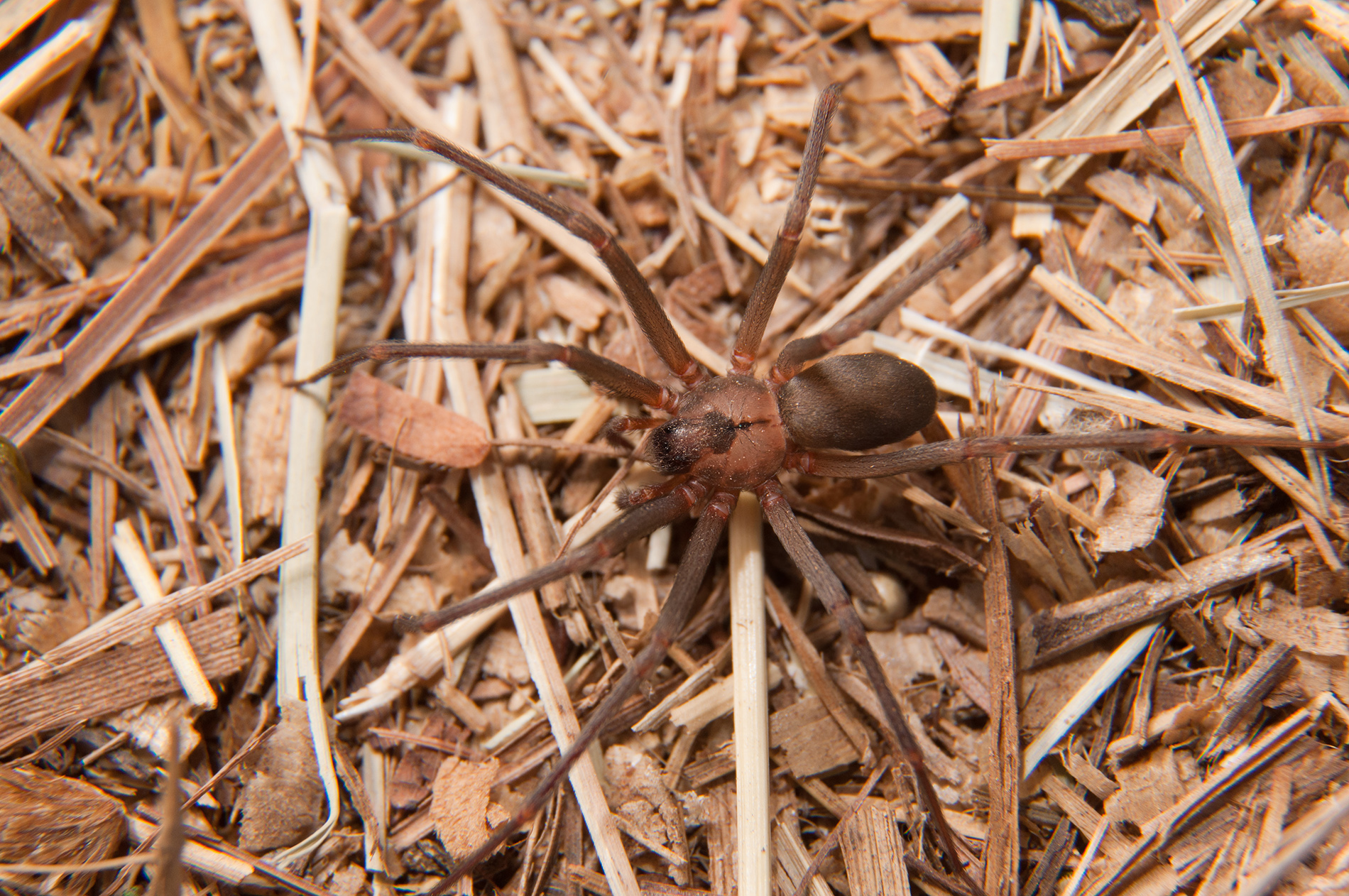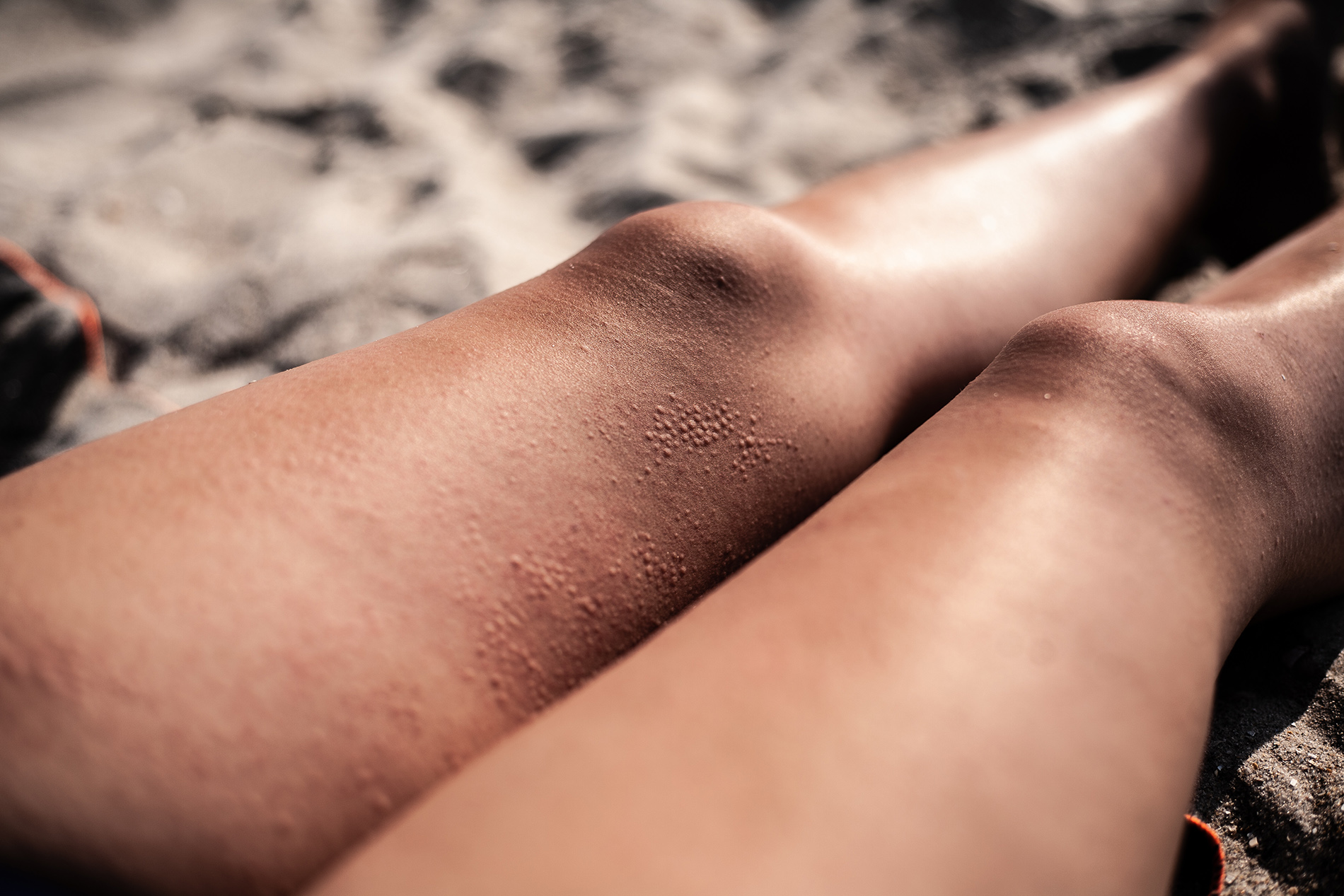By Dana Rawl, MD, MPH, Occupational Health
Warm weather means animals become more active, including venomous spiders. There are two concerning venomous spiders in the U.S.: the black widow and the brown recluse. Neither is aggressive, but both will bite if they are threatened or touched. Both spiders can be found outside in dark, secluded areas, such as rock crevices or wood piles, or in and around enclosed structures, such as sheds, well houses, outhouses, barns or buildings.

Black widow spider
Black widow spiders are about a half-inch in diameter and are jet black in color with a characteristic red hour-glass shape on the underside of the spider’s abdomen. They build their webs between objects in undisturbed areas, and bites usually occur when there is direct contact with the web and spider. The fangs of the spider can produce two small puncture marks in the skin. The venom is neurotoxic and commonly causes immediate burning pain at the wound site. Nausea and/or vomiting can occur, and cramping pain can spread to the chest, abdomen or muscles. Medical evaluation is warranted for proper treatment and to assess the need for anti-venom to treat severe symptoms.

Brown recluse spider
The brown recluse spider is brown in color with a dark violin-shaped mark on its head. They are shy spiders and prefer secluded dry areas. Their bites can cause a stinging sensation, but generally, these bites are not initially painful. The venom injected is proteolytic and destroys local tissue. Within a few hours, the skin develops a pale central blister with surrounding redness (target lesion), swelling and tenderness. Within a few days, the affected tissue will show signs of necrosis (tissue destruction) with darkening of the wound. Depth of tissue destruction may not be realized for days or weeks. Medical treatment consists of rest, ice, compression and elevation. Pain management and wound debridement may be required.
The more you are outside, the more likely you are to encounter a venomous spider. It's important to seek medical evaluation and treatment to manage a venomous bite or sting. Avoid handling spiders, avoid areas where they live, wear protective clothing, such as boots, long-sleeve shirts and long pants when working outdoors, and wear leather gloves when handling brush and debris.
Always look before you reach or step. Be safe out there!

Dana Rawl, MD, MPH, Occupational Health







Leave a comment